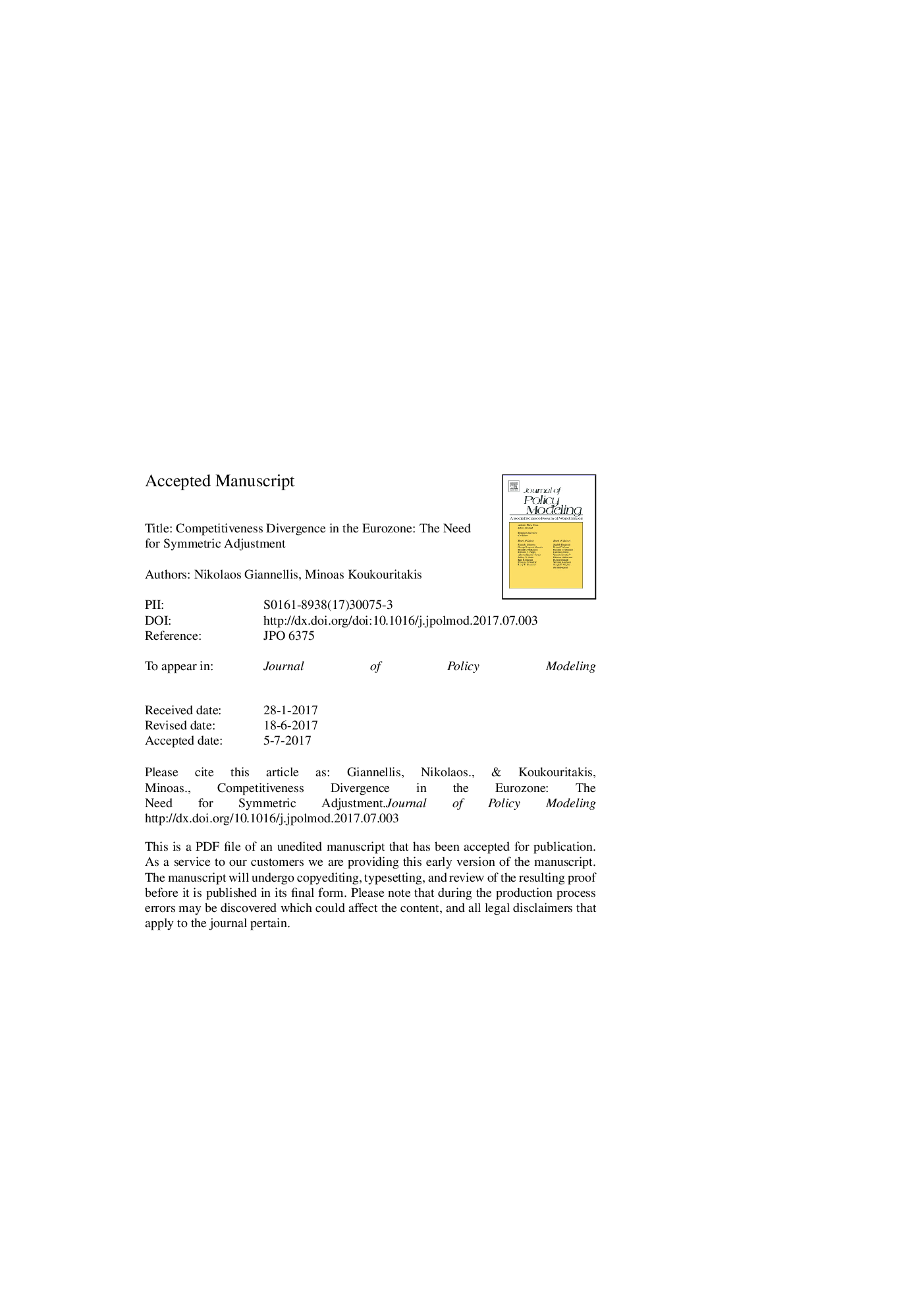| Article ID | Journal | Published Year | Pages | File Type |
|---|---|---|---|---|
| 7369240 | Journal of Policy Modeling | 2017 | 34 Pages |
Abstract
This paper investigates whether the adjustment mechanisms driven by the fiscal and monetary policies can restore real exchange rate equilibrium and thus, competitiveness symmetry between deficit and surplus countries in the Eurozone. Focusing on the dominant role of Germany as the leading economy in the EMU, we test the presence of real exchange rate equilibrium between Germany and selected EMU countries. For comparison reasons, we examine the same research question between Germany and selected non-EMU countries. Our main finding is that, under the framework of the monetary union, the examined adjustment mechanisms cannot restore equilibrium between Germany and deficit countries. Although the loss of nominal exchange rate fluctuation could explain this failure, policy makers should focus on national fiscal policies and on the structure of national markets. Besides the implementation of structural reforms, the way out of the crisis requires a symmetric adjustment process, in which the European Central Bank has a crucial role to play.
Keywords
Related Topics
Social Sciences and Humanities
Economics, Econometrics and Finance
Economics and Econometrics
Authors
Nikolaos Giannellis, Minoas Koukouritakis,
